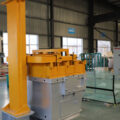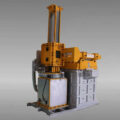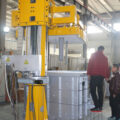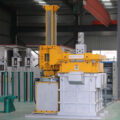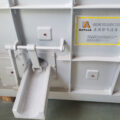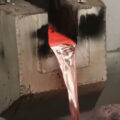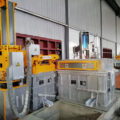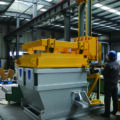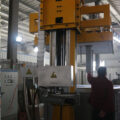Online degassing unit is used for hydrogen (H) and slags removal from molten aluminum. It serves high precision molten aluminum purification industry.
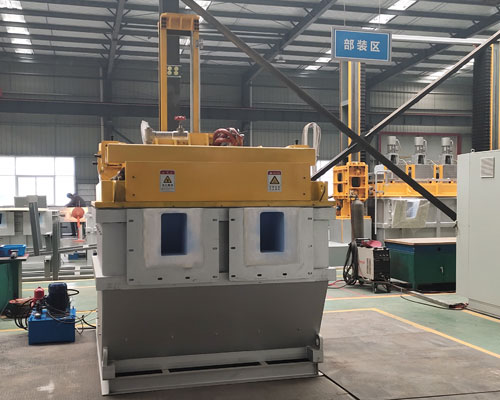
When the melt crystallizes, due to insufficient liquid metal supplementation between the matrix dendrites or due to the presence of unremoved gas (mainly hydrogen), the micropores formed in the dendrites after crystallization are called porosity. The micropores formed by insufficient feeding are called shrinkage porosity; the porosity formed by gas is called gas porosity.
The loose macroscopic tissue is characterized by black pinholes, and the fractured tissue is characterized by rough tissues and not dense. When the looseness is severe, there will be small white bright spots on the fracture. The microstructure is characterized by angular black holes. The more severe the looseness, the greater the number of black holes and the larger their size.
Porosity reduces the density and compactness of the ingot, especially the impact toughness and transverse elongation of high-strength aluminum alloys. In addition, loose ingots can cause cracks during hot rolling and forging. Therefore, as an important structural defect of ingots, porosity must be prevented.
Strict control should be carried out on the porosity that has occurred in the ingot, and when it exceeds the level allowed by the standard, the ingot will be “disqualified.” The degree of porosity in the aluminum alloy ingot can generally be determined by measuring the density of the sample and comparing it with the theoretical density of the alloy. But in production, for the sake of convenience, it is usually based on the four-level standard picture comparison and rating and determined to be invalid.
The porosity in the continuous casting ingot of aluminum alloy is always distributed in the equiaxed crystal region with a wider transition zone and is always filled with gas. Under normal conditions, the largest loose zone of the slab ingot occurs within 3mm of the wide surface skin layer. The largest loose zone of the round ingot occurs in the center of the ingot, and develops to the edge with the increase of the mold height. The supply flow conditions have a great influence on the distribution of porosity, and may disrupt the above-mentioned rules and cause the largest porosity in local areas.
According to the formation process of porosity and influencing factors, the methods to prevent porosity in ingots are:
1. Reduce the gas content in the melt.
- After the furnace is repaired, the furnace must be dried thoroughly;
- Refining agents, casting tools must be thoroughly preheated and baked;
- Degassing refining must be thorough (The average degassing efficiency of AdTech online degassing unit is 60%).
- Prevent the melt from staying in the furnace for too long.
2. Reduce the size of the transition zone in the ingot.
- Concentrated diversion is prohibited, and a suitable funnel is used for uniform flow;
- Properly increase the casting temperature to prevent sequential crystallization of the volume;
- Reduce the effective height of the crystallizer and increase the water pressure appropriately to improve the cooling strength of the ingot;
- Appropriately reduce the casting speed.



